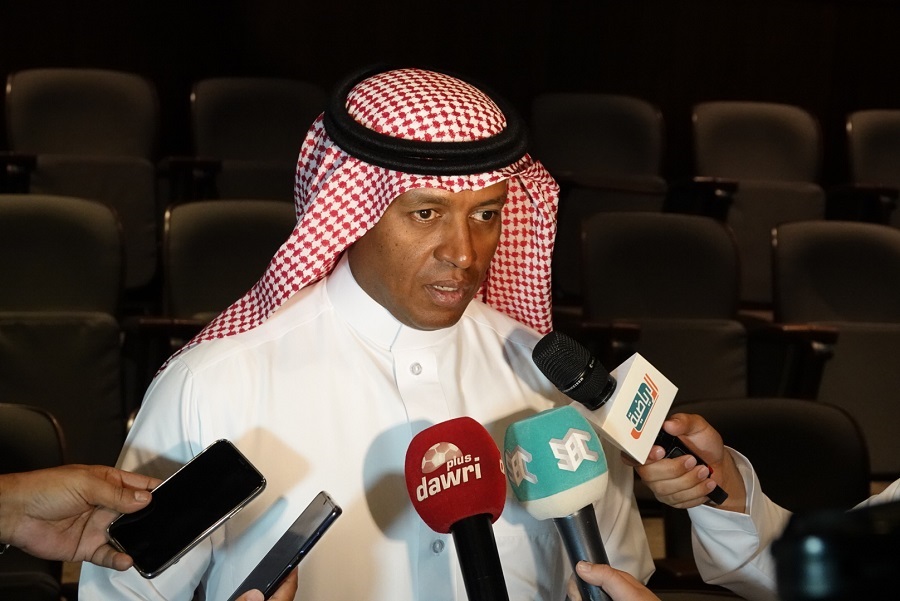JEDDAH: With the conclusion of the European Tour event and the inauguration of the Saudi Golf Summit at King Abdullah Economic City (KAEC) on Tuesday, Saudi Arabia is taking one of the most significant development moves in golf’s recent history.
The Kingdom plans to become the most innovative market in the sport within the next 10 years, said Majed Al-Sorour, CEO of the Saudi Golf Federation and Golf Saudi.
“Golf isn’t just a game,” Al-Sorour told Arab News, “it is related to various sectors and it creates well-paid jobs that attract Saudis.”
He added that golf requires commitment, dedication, self-governance, etiquette and discipline and that due to these values, he wants golf “to become part of the fabric of modern Saudi Arabia.”
The Kingdom is aiming to have up to 27,000 registered golfers and to ensure that over one million Saudi nationals have actively tried golf.
Golf Saudi wants to inspire and provide opportunities to every player regardless of ability, status or gender.
To help develop national talents, the organization is working on establishing golfing camps for children with a minimum of one camp per week at each golf course, with each camp consisting of roughly 30 children.
In order to achieve its plan, Golf Saudi is working in collaboration with the public and private sector, “Partnership government ministries is fundamental for progress, we are working with the ministries of transportation, education, environment and communication,” Al-Sorour said.

Majed Al-Sorour, CEO of the Saudi Golf Federation and Golf Saudi said the Kingdom plans to become the most innovative market in the sport within the next 10 years. (AN Photo/Huda Bashata)
He continued: “We are working with giga projects and independent developers, so the nation’s golf portfolio will be stronger than ever.”
Golf Saudi has developed a tourism framework to align this strategy with tourism stakeholders in the country. Golf course development plans are reaching their latter stages at the Diplomatic Quarter in Riyadh and the Red Sea Project.
Moreover, other giga and mega projects in the Kingdom will also include golf facilities at Diriyah Gate and Neom.
Al-Sorour said that the national golf team is gradually improving, and he anticipated that it will be able to compete on a global level within five years: “Golfers need time for training to develop properly.”
Golf Saudi is collaborating with the Ministry of Education to include golf in the basic and higher education system.
“We cannot spread the game’s culture without cooperating with the education ministry,” said Al-Sorour.
“We are having constant meetings and trying to create a partnership to integrate golf in the school curriculum.
The European Tour event took concluded this year at KAEC’s award-winning Royal Greens Golf and Country Club. It has won a number of international awards recognizing the golf, clubhouse and luxurious facilities.
Anas Najmi, head of the quality of life sector in KAEC, told Arab News that the top factor of spreading any game is having the infrastructure and the right facilities.
“Everyone knows about golf as a widely spread game on a global level, we have tried over the past period to ensure that we have enough world-class infrastructure with the highest standards so we can host activities, tournaments and championships,” Najmi said.
KAEC, with its award-winning facilities and first-of-its-kind golf academy in the region, has been attracting more locals interested in playing golf.
“We see a trend of lots of students wanting to know more about golf and willing to learn and practice, it is a game for many ages,” Najmi told Arab News, adding: “We have a huge interest in helping visitors and golf enthusiasts.”
Naomi continued: “We are strategically positioned in the heart of a population of 10 million, the recently inaugurated train station connects the city to Jeddah, Madinah and Makkah within an hour.
“We get lots of delegations from universities and schools, both public and international.”



























